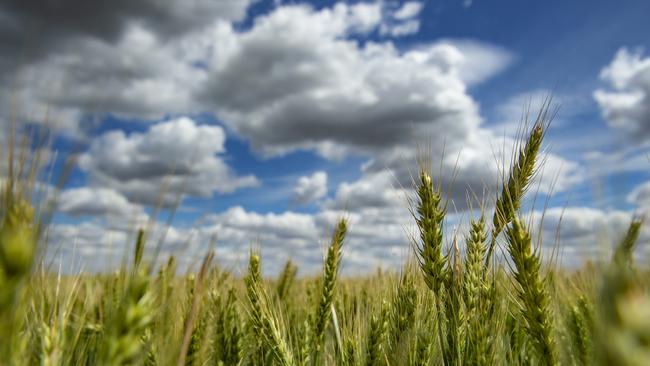Australian agriculture set to reach record-breaking $73 billion value for 2021-22
The latest forecasts have farmers looking at another record-breaking year. See which commodities are leading the charge.

Australian farmers are looking at another record-breaking year, with the sector tipped to hit a whopping $73 billion production value for 2021-22.
And the good news will extend to agricultural exports, with a predicted 12 per cent increase in the coming year to $54.7 billion value, thanks in large part to what’s anticipated to be another bumper crop harvest.
The forecasts were released today in the ABARES September commodities report, and are some of the largest increases the data agency has ever predicted.
Farmers had already been optimistic for the year ahead, welcoming a strong start to spring across with solid commodity prices, good rainfall and most regions in Australia now out of drought.
If the forecast proves accurate, it will be the first time the sector exceeds $70 billion in production value – bringing it closer to its goal of reaching $100 billion by 2030.
But the report states that challenges remain, warning free movement of ag workers across state borders will be “critical” to combat labour shortages and keep supply chains moving.
Value for 2021-22 was originally forecast at $66 billion in the June outlook, but ABARES executive director Jared Greenville said the revision was due to ”a combination of factors, all tumbling neatly into place”.
Crops will lead the charge, with a 7 per cent increase to $39.5 billion thanks to strong prices for grains, cotton and sugar. Wheat production alone is likely to reach 32.6 million tonnes, which would make it the second-largest crop ever produced, following last year’s record-breaking harvest.
Meanwhile, livestock production value will jump 8 per cent to $33.5 billion, thanks to higher volumes.
In terms of exports, crops were again anticipated to make a big contribution, due to high prices and the fact key international competitors were suffering poor growing seasons, including the USA, Russia and Canada.
Canola exports are to increase by 50 per cent, thanks to increased planting, while China’s tariffs on Aussie barley will see that commodity down about 5 per cent.
Wool, beef, lamb and dairy exports are all also to increase to about $24.7 billion.
However, the year will not be without its headaches. The report states high international freight costs and the lack of availability of shipping containers will continue to be a challenge for exporters of cotton, grains and horticulture.
Agriculture labour shortages will also be an ongoing problem, and could see fruit and vegetable prices increase “though well within typical variation”.
While the Federal Government’s new agriculture visa will be welcome, the report noted that upcoming harvests will still rely on domestic labour or seasonal worker programs.
“The free movement of available harvest labourers within and between key growing regions, including across state borders, will remain critical in coming months,” the report stated.
“Differences in state requirements for vaccination of essential workers may introduce frictions. Outbreaks of Covid-19 in regional centres could also present additional complications for securing labour into or out of those regions.”
Despite the positives, the forecast predicts production will fall after this year.
“Australian farmers operate in one of the world’s most variable climates so we cannot expect the good seasons to keep coming. The same can be said for high world prices,” Dr Greenville said.
“That said, the last two years have placed our farmers in a good position to take on any challenges ahead.”

